Showing 1–12 of 23 results

Atreyashiksha holds a unique position in the corpus of the Shiksha literature. It shows that the main aim of the text is to explain the practical aspects of the different ways of Vedic recitation, in whose connection it describes the theoretical elements of Shiksha too. The phonological rules, most of which are expressed in the Taittiriya Pratishakhya, are also illustrated in this text.
Atreyashiksha is one of the Shiksha texts of the Krishna-Yajurveda, Taittiriya school. This text has been critically edited and translated consulting two palm-leaf manuscripts which are currently the only discovered manuscripts of this text in public libraries. Shiksha texts deal with phonetics and phonology of the Vedas and the method of proper pronunciation and recitation. The Atreyashiksha is well-structured in terms of arranging its topics of discussion.
When compared to the other Shikshas of the Taittiriya school, the Atreyashiksha, in keeping its focus on the discussion on the different methods of Vedic recitation, namely, word-reading (padapatha), sequential reading (kramapatha), tangled reading (jatapatha) and the five varieties of the reading of the phonic sequences (varnakramas), holds a unique position in the corpus of the Shiksha literature. A close reading of the text shows that the main aim of the text is to explain the practical aspects of the different ways of Vedic recitation, in whose connection it describes the theoretical elements of Shiksha too.
The book, therefore, serves as a practical guidebook to Vedic reciters who recite the above-mentioned readings of the Taittiriya Krishna-Yajurveda along with the continuous reading. While describing the methods of recitation, the Atreyashiksha gives enough emphasis on the theoretical nuances. The phonological rules, most of which are expressed in the Taittiriya Pratishakhya, are also illustrated in this text. This book consists of a detailed introduction, the critically edited text in Devanagari script, its Roman transliteration and an authentic English translation.

Here are essays on education, its current status, trends and problems in Bangladesh, India, Indonesia and Thailand focus on art in the age of science, educations role in promoting peace and the Gandhian system of basic education.
Traditional education strives to expand the spheres of existence through social awareness (forming kinship with the entire world), cosmological awareness (expansion of the being by self-transformation), and technological awareness (relating creativity to the ritual enforcement of life). In contrast, modern education teaches a way of life, which is limited by self-centred consumerism, which allows mans ego to establish itself as the conqueror of nature, which fragments people through competitive vocations and specialized technical professions. How do we resolve this deep dilemma between the traditional and modern systems of education? Or, alternatively, how can a sensibly worked-out system of education afford a symbiosis between modernity and wisdom-tradition? Addressing this vital question, the authors here look afresh at the relevance of art in the age of science/technocentrism, the role of education in promoting peace and concord, Gandhian system of basic education and, finally, how far Indias national concerns are reflected in its national policy on education. An assemblage of 16 education-related essays, this volume is essentially the outcome of a Conference on the Cultural Dimension of Education and Ecology, held in New Delhi on 13-16 October 1995 as a part of the Unesco Chair activities (in the field of cultural development) at the Indira Gandhi National Centre for the Arts. It presents insightful perspectives on primary education, focussing specially on its current status, trends and problems in Bangladesh, India, Indonesia and Thailand. The volume will interest all those involved with education: whether as scholars, professionals, planners, or as reformers.
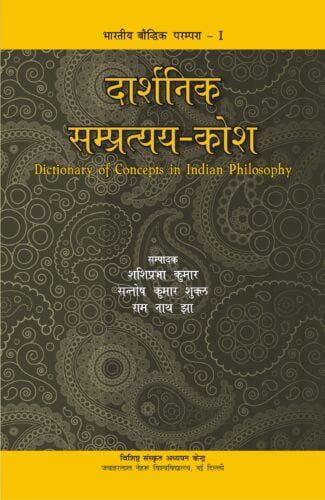
The present volume consists of a classical interpretation of important Indian philosophical concepts based on the original sources of each system thereof. Two hundred technical terms have been selected from significant schools/branches of Indian philosophy such as Veda, Mimamsa, Upanishads, Vedanta, Yoga, Samkhya, Vaisheshika, Nyaya, Jaina and Buddhism.
This encyclopaedic dictionary is one of its own kind in the sense that it is for the first time that a selection of original Indian philosophical concepts is done and the concepts are then explained by eminent scholars as per the Sanskrit texts of each school. There is no doubt that the dictionary will be useful for one and all: the inquisitive readers, researchers as well as the scholars of Indian Philosophy.
The present volume consists of a classical interpretation of important Indian philosophical concepts based on the original sources of each system thereof. Two hundred technical terms have been selected from significant schools/branches of Indian philosophy such as Veda, Mimamsa, Upanishads, Vedanta, Yoga, Samkhya, Vaisheshika, Nyaya, Jaina and Buddhism.
This encyclopaedic dictionary is one of its own kind in the sense that it is for the first time that a selection of original Indian philosophical concepts is done and the concepts are then explained by eminent scholars as per the Sanskrit texts of each school. There is no doubt that the dictionary will be useful for one and all: the inquisitive readers, researchers as well as the scholars of Indian Philosophy.
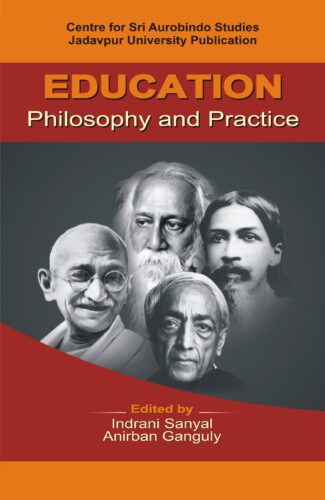
The book elaborates and analyses various strands of Sri Aurobindo’s thoughts on education. It also explores classical Indian model for education, with the viewpoints of some of his distinguished contemporaries like Rabindranath Tagore, Mahatma Gandhi, J. Krishnamurti and others.
The anthology Education: Philosophy and Practice, an academic initiative of the Centre for Sri Aurobindo Studies, Jadavpur University, elaborates and analyses various strands of Sri Aurobindo’s thoughts on education. Sri Aurobindo divorced from history (especially from the very political atmosphere of the period, when it was a colonial India) is difficult to situate. The present study, keeping Sri Aurobindo’s ideas on education central to it, also explores classical Indian model of education, the Bengal National model for education and also explores viewpoints of some of his distinguished contemporaries like Rabindranath Tagore, Mahatma Gandhi, Jiddu Krishnamurti, Sister Nivedita, Ananda Coomaraswamy and others. Sri Aurobindo, as a practical guide, as an acarya in the typical classical Upanisadic model, had far-reaching influences upon his disciples. This volume is an eye-opener for the subject on professional ethics for teachers and on the inter-personal relation between the teacher and student. The present volume consists of twelve essays which are analytic, informative and is lucid in style. This is a well-rounded text for students and an essential reference for researchers. This volume is surely helpful in the domain of Sri Aurobindo Studies.
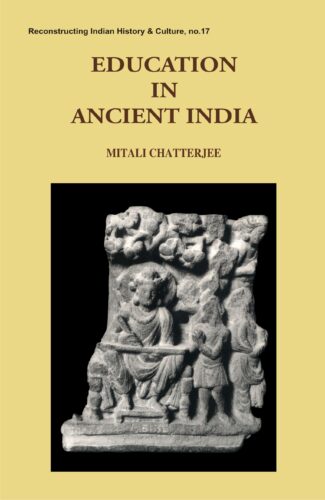
The book is an in-depth study of the socio-cultural life of the Mising tribe of Assam. It studies the factors influencing their material culture, traditional life pattern, art and craft activity et al. and tries to analyze the impact of modernisation, acculturation and urbanization faced by them.
Mitali Chatterjees study of education in ancient India focusses chiefly on over two hundred years: ad 319-550, of the reign of Imperial Guptas, which has been variantly described as the Golden Age, Periclean Age, or even the Age of Hindu Renaissance. It was a time when literature, arts, and sciences flourished in a degree beyond the ordinary. These achievements are inconceivable without a well-evolved system of education. With its theme like education, covering such a large period of time the book traverses a terrain so far little charted. It is indisputably a work of painstaking research trying, as it does, to retrieve educational set-up of classical India from an astonishing mass of contemporary sources, including notably (a) Puranas like Markandeya, Matsya, Vayu, Vishnu, and Vishnudharmottara; (b) Smriti texts like Vyasa-smriti, Harita-samhita, and Pitamaha-smriti; (c) Literary classics of Kalidasa, Vishakhadatta, Kumaradasa and others; (d) Jaina and Buddhist works of scholars like Vasubandhu and Dinnaga; (e) Astronomical/scientific treatises of Aryabhata and others; (f) Foreign travellers narratives; and (g) Other miscellaneous writings on grammar, linguistics and polity besides inscriptional and numismatic material. Notwithstanding the ethical-cum-religious overtones of ancient Indian education, the pathashalas (schools) and universities taught Sanskrit, literature, arts, sciences, philosophy, laws, and even rituals. In conclusion, the author demonstrates how the educational system of the Imperial Guptas, in certain ways, anticipated some of the fundamental theories given by great modern educationists. A useful work for anyone involved with education; whether as a historian, a professional or a scholar.
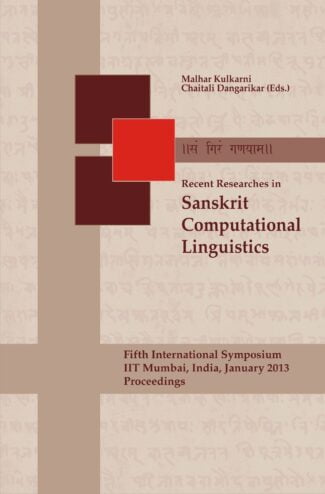
This volume deals with the computational modelling of Panini’s grammar Astadhyayi together with supplementary texts, computational tools for Sanskrit language and their applications in the traditional Sanskrit concerns. It is an important initiative in the filed of Sanskrit computational linguistics as it records insightful current trends in the field.
This volume is the proceedings of the 5th International Sanskrit Computational Linguistics Symposium (ISCLS), held at IIT Bombay during 4-6 January 2013. These proceedings include fourteen selected and three invited papers. The selected papers deal with topics such as computational modelling of Panini’s grammar Ashtadhyayi together with its supplementary texts, computational tools for Sanskrit language and their applications in the traditional Sanskrit concerns. Accordingly, this book delves upon how clues from Ashtadhyayi help in identifying compound types; how Ashtadhyayis digital edition can be structured and implemented; the completeness analysis of a Sanskrit reader; graph-based analysis of parallel passages; some relation-specific issues in parsing Sanskrit texts, text normalizer for Sanskrit; extended Nyaya-Vaisheshika ontology; and a search engine for Sanskrit, among others.
The invited papers focus on lexicography, with special reference to Encyclopaedic Dictionary of Sanskrit on Historical Principles; some aspects of semantics in early India in understanding the meaning of words; and the computational database of Paninis grammar.
This collection, thus, is an important initiative in the filed of Sanskrit computational linguistics as it records insightful current trends in the field, making it a must buy for students, researchers, and all those interested in Sanskrit grammar.
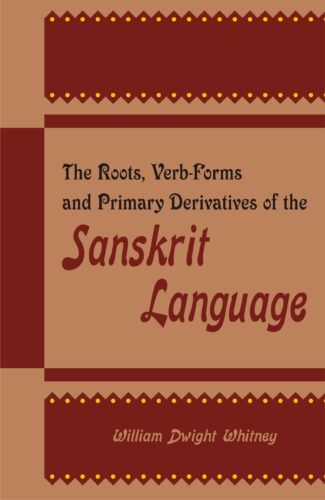
Exhaustive in nature and giving authentic information, this work is a thesaurus in its own kind, respecting the Sanskrit language of every age. It covers the periods in the life of the language, acknowledging and distinguishing it with different notations.
The book is intended especially as a supplement to Sanskrit Grammar of W.D. Whitney and includes all the views comprehensively of a given root in the Sanskrit language. The author has respected the language of every period, and the great St. Petersburg Lexicon of Böhtlingk and Roth have been his greatest source for materials on epic and classical literature. In the older language of Vedas and Brahmanas and Upanishads and Sutras, he has done much more independent work. The periods in the life of the language which are acknowledged and distin- guished by appropriate notation are six: the Veda (v.); the Brahmana (b.); the Upanishads (u.); the Sutras (s.); the epics (e.); and the common Sanskrit (c.). They have all been adequately explained in detail. The book will be useful to the scholarly community in need of authentic information on Sanskrit language.

Sanskrit education was a prime focus of the Pallava, Pandya, Cola, Vijayanagara, Nayaka and other kings of the Tamil country. Education was disseminated through agraharas, ghatikas, temple-colleges and mathas. Much authentic and interesting information about Sanskrit education and literature is available from the copper-plate grants and stone epigraphs.
Education, especially Vedic and Vedantic, along with allied subjects, was a prime focus of the rulers of the Tamil kingdoms. This book highlights the educational initiatives during the reigns of the Pallava, Pandya, Cola, Vijayanagara, Nayaka and other kings.
The inscriptions across the Tamil country talk about Sanskrit education in detail. Agraharas, ghatikas, temple-colleges and mathas were the main educational institutions propagating Sanskrit texts. The teachers were handsomely paid and bhatta-vritti was the norm of the day; villages were donated to them Þ either as ekabhoga or as agrahara (brahmadeya). There were poets and composers among the rulers, as an embodiment of their dedication to education. The numerous grants act as authentic sources of information on the reigns of these rulers, scholars, composers and educational institutions across many centuries Þ beginning from the Pallava times.
Giving a deep insight, this book is an invaluable source of information for students and researchers in the ancient and medieval history of India.

Sanskrit education was a prime focus of the Pallava, Pandya, Cola, Vijayanagara, Nayaka and other kings of the Tamil country. Education was disseminated through agraharas, ghatikas, temple-colleges and mathas. Much authentic and interesting information about Sanskrit education and literature is available from the copper-plate grants and stone epigraphs.
Education, especially Vedic and Vedantic, along with allied subjects, was a prime focus of the rulers of the Tamil kingdoms. This book highlights the educational initiatives during the reigns of the Pallava, Pandya, Cola, Vijayanagara, Nayaka and other kings.
The inscriptions across the Tamil country talk about Sanskrit education in detail. Agraharas, ghatikas, temple-colleges and mathas were the main educational institutions propagating Sanskrit texts. The teachers were handsomely paid and bhatta-vritti was the norm of the day; villages were donated to them Þ either as ekabhoga or as agrahara (brahmadeya). There were poets and composers among the rulers, as an embodiment of their dedication to education. The numerous grants act as authentic sources of information on the reigns of these rulers, scholars, composers and educational institutions across many centuries Þ beginning from the Pallava times.
Giving a deep insight, this book is an invaluable source of information for students and researchers in the ancient and medieval history of India.
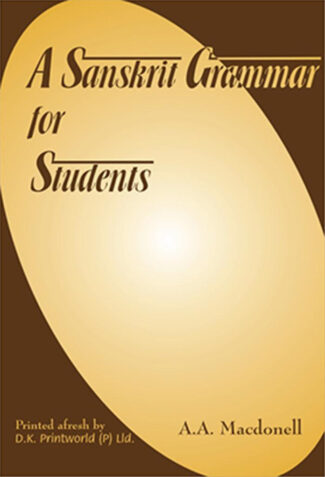
This fresh typesetting of Prof. Macdonells work explains the mechanics of the Sanskrit languages euphonic combinations (sandhi), declension, conjugation, nominal stem formation and compounds, etc., with insights into the syntactical arrangement of Sanskrit sentence.
It is an altogether fresh reprint of the eminent Orientalist, Arthur Macdonells A Sanskrit Grammar (1927 edition: Oxford). Which, ever since its first appearance, has been widely acclaimed both in India and elsewhere in the world, as an authentic, at once relevant account of classical Sanskrit.
Projecting, with well-chosen examples, a whole mass of grammatical forms to be met with in the post-Vedic Sanskrit literature, the author systematically explains the mechanics of its euphonic combinations (sandhi), declension, conjugation, nominal stem formation and compounds, and a lot else — with complete insights into the syntactical arrangement of Sanskrit sentence. Supported by several information-packaged appendices, the book also carries a brilliant resume of the Sanskrit grammatical tradition going back to the 5th century BC.
Now typeset anew with the latest technological aids, the late Macdonells work today remains as much indispensable to the students of Sanskrit as to the scholars, who seek to discover for themselves the splendour of its literary classics.

This fresh typesetting of Prof. Macdonells work explains the mechanics of the Sanskrit languages euphonic combinations (sandhi), declension, conjugation, nominal stem formation and compounds, etc., with insights into the syntactical arrangement of Sanskrit sentence.
It is an altogether fresh reprint of the eminent Orientalist, Arthur Macdonells A Sanskrit Grammar (1927 edition: Oxford). Which, ever since its first appearance, has been widely acclaimed both in India and elsewhere in the world, as an authentic, at once relevant account of classical Sanskrit.
Projecting, with well-chosen examples, a whole mass of grammatical forms to be met with in the post-Vedic Sanskrit literature, the author systematically explains the mechanics of its euphonic combinations (sandhi), declension, conjugation, nominal stem formation and compounds, and a lot else — with complete insights into the syntactical arrangement of Sanskrit sentence. Supported by several information-packaged appendices, the book also carries a brilliant resume of the Sanskrit grammatical tradition going back to the 5th century BC.
Now typeset anew with the latest technological aids, the late Macdonells work today remains as much indispensable to the students of Sanskrit as to the scholars, who seek to discover for themselves the splendour of its literary classics.

The volume aims at sharpening the skills of translating the Sanskrit philosophical texts so as to retain fundamental concreteness, basic dynamics and original flavour. The volume particularly highlights the use and significance of prefixes in the backdrop of leading Indian philosophical texts.
This volume attempts to present a dynamic approach to translating Sanskrit philosophical texts while emphasizing on keeping certain principles in mind when rendering Sanskrit philosophical texts such as: the fundamental concreteness, the basic dynamics, the resultant ambiguity and the necessary congruence of the term in question with the specific context in which it is introduced. In this context, it particularly throws light on the use and significance of prefixes, particularly of propositions used as prefixes, in Sanskrit philosophical terminology. It also examines the basic problem in dealing with prefixes; their relation to the verbal roots to which they are attached. It studies the philosophical texts of various leading schools and systems including Vedanta, Mimamsa, Samkhya, Yoga, Nyaya, Vaisesika, Buddhism and Jainism, to examine the compound-terms in them and the mental operations which are grammatically and philosophically expressed. Study of the variation of terms brought about by the application of prefixes is intended. It argues that the prefixes throw into relief, by the different modes of their application, the specific bent of the systems themselves. They have retained the motional and emotional significance, which they apparently once had, at the earliest stage. The book also takes up some vital questions, such as, whether the prefix or the noun is the essential bearer of the meaning.
The volume is a well-researched study of the use of language in Sanskrit philosophical texts. It will prove useful to scholars and students of Indology, particularly those concerned with Sanskrit language and philosophy.
| There are no products |